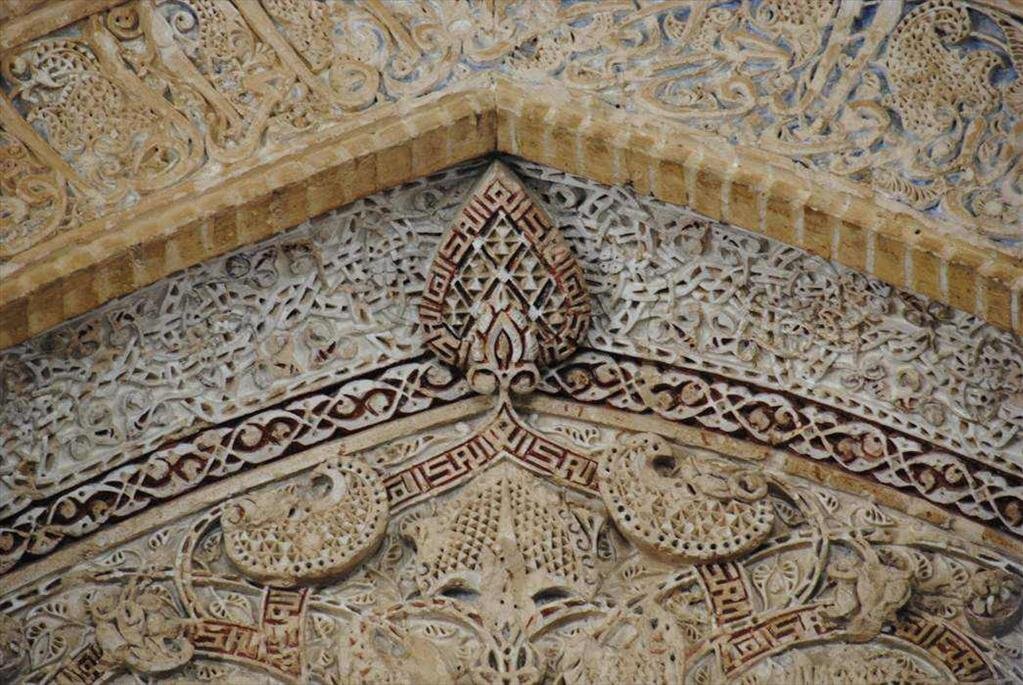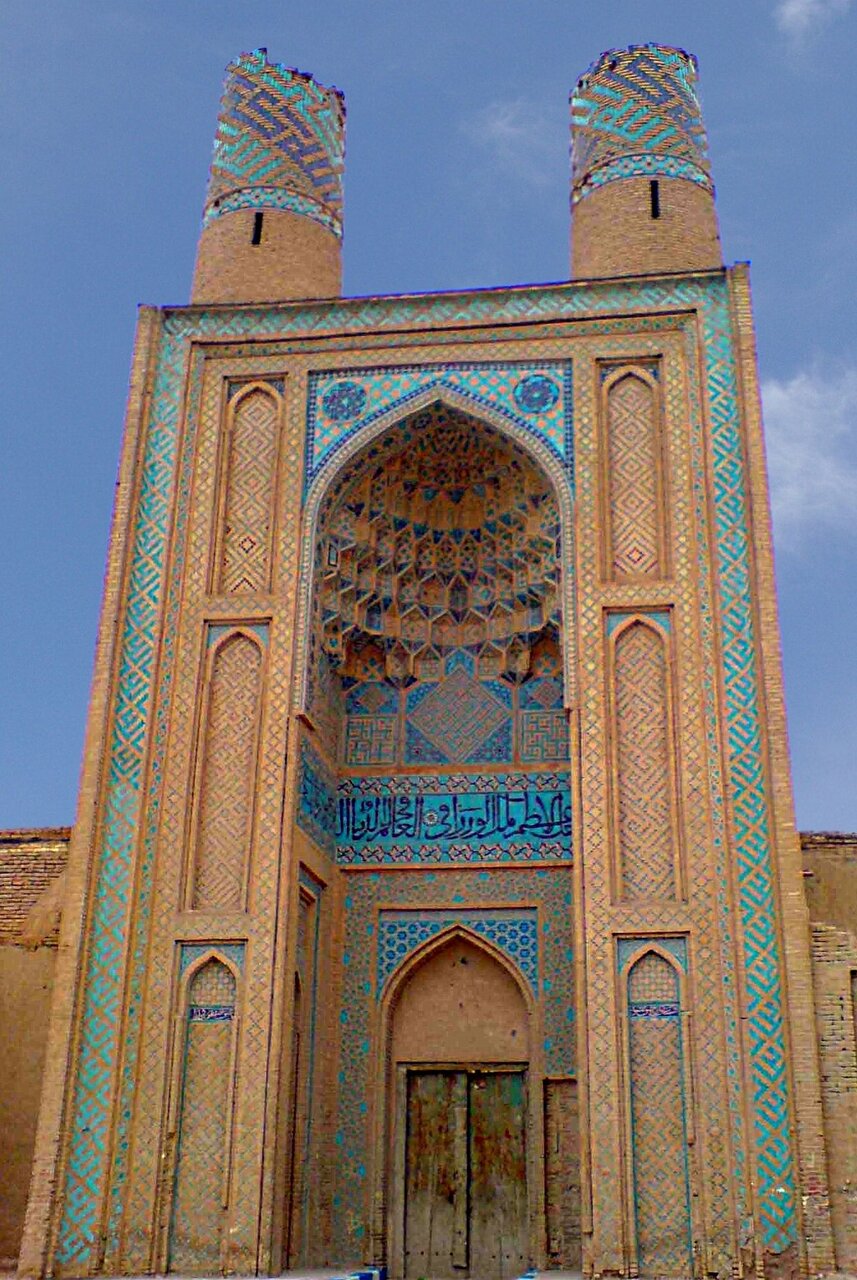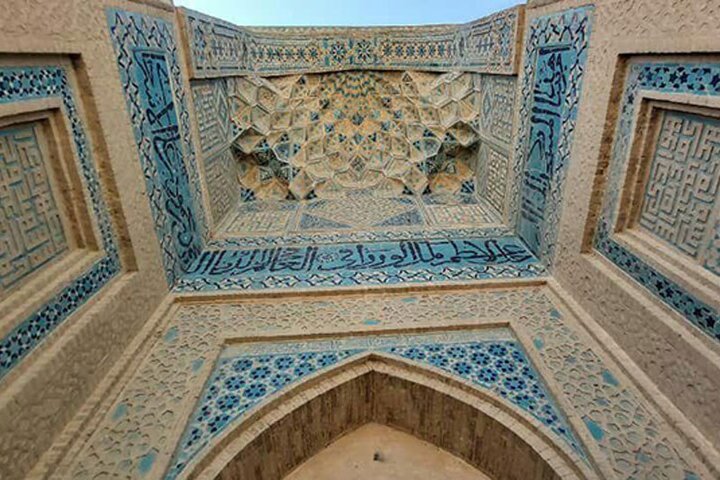Iran (IMNA) - The mosque was built with a mud brick core and fired brick siding. It was commissioned by an Il-Khanid administrator from Ushturjan and dates to 715 AH (1315-1316 CE) according to two different inscriptions.
The decoration is more significant than the main building, which consists of a small courtyard with a dome chamber in front of a vaulted iwan on one side and three arcade prayer halls on the other.
A compilation of decorative methods from all over the nation can be seen in the variety of patterns, materials, and material combinations used in the decoration of the mosque.
The tall stucco mihrab depicts an unusual proportion that reaches the transitional zone. Some decorations are formed by terracotta elements across the dome’s interior, and the gaps are filled with a variety of painted plaster patterns.

Mosaic faience, glazed and unglazed terracotta and other materials are lavishly used to decorate the northern entrance portal.
Due to possible constraints imposed by pre-existing structures, the main entrance portal and its flanking cylindrical minarets are situated on the northern exterior façade, off-axis with the sanctuary.
The construction process appears to have been quick and completed in a few short phrases. According to Archnet, the dome chamber appears to have been erected slightly earlier, utilizing thick plaster over the mud brick core.
Experts say in the area around Isfahan, where fired brick predominates, the use of mud brick is unusual.
Only the arcades have exposed brick, though it's possible that the rest of the building used a plaster coating here as well. The plaster is decorated with a wide range of decorative carvings, such as geometric patterns, floral motifs in high relief, simulated brick bond, and brick end-plugs, which are in some places arranged to form rectangular Kufic inscriptions.

Repairs made in 1476 by a devout Ushturjani in the name of the Aq Qoyunlu ruler, Uzun Hasan, are noted in an inscription on the courtyard”s eastern pier.
The Ilkhanid dynasty, also called Il-Khanid, was a Mongol dynasty that ruled Iran from 1256 to 1335. Il-Khan is Persian for “subordinate khan.”
The Il-Khanids consolidated their position in Iran and unified the region as a political and territorial entity after several centuries of fragmented rule by small dynasties.


Your Comment